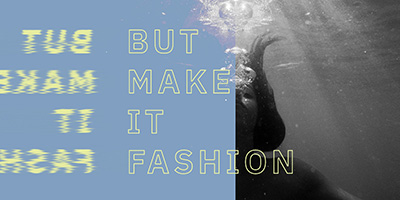“I have this theory that lesbians start certain fashion things,” said a lesbian in a New York Times article in 2004 that acknowledges in its opening paragraph that “lesbian style” used to be an oxymoron. The L Word is a cited influencer, of course. (I’ll never go a day not thinking about Shane’s leather vest that tied in front. Her wearing it back from the club, her hair so many different lengths at once, liftoff in every direction.)
It’s funny how they never even saw us coming — the queer women — and now our fingerprints are everywhere. All over the fashion industry. It’s fitting. We know what we’re doing. Better than anyone else, sometimes.
When we are considering how to adorn ourselves, we all arrive at our closets at some kind of “disadvantage.” Not all of us; I guess there’s that small percentage of humans who do not, which is a fate so rare and coveted that most who’ve met it have made a living out of having that kind of face, body, skin.
I’ve always been intrigued by the numerous small physical factors that influence how we clothe and present ourselves. The disadvantages we perceive ourselves to have, the things we think we need to cover up. That skin condition, that body part.
I think a lot of queer style — not all of it, but the best of it — pushes us to disregard the idea that certain looks are only for certain bodies, or for a specific gender seeking appeal from the opposite gender. I think this is why as soon as we got in our door, queer women invaded the fashion realm in droves. This was our big radical idea.
While it’s true that many prominent queer-oriented brands and designers still frustratingly present items for people of limited shape and size, our push for absolute inclusion often enables us to overlook how, even despite that, these brands have been from the jump doing things no straight woman or gay man ever wanted to do in fashion. Even having models who are not a size 0-2 was a radical departure from the entirety of mainstream fashion until five to ten years ago. I grew up reading all the popular fashion and teen magazines and we never, not ever, not one time, saw a girl who wasn’t just thin, but as skinny as a woman could ever possibly be. And white. So white, so able-bodied, so straight-looking.
The internet changed that. I believe that queer women and trans folks are at the front of the line enabling this change, and maybe part of that comes from struggling growing up with all the weird things our bodies did that we wanted to literally cover up AND this whole other thing, of not knowing where we fit into a heteronormatively gendered fashion world run mostly by gay men. And I think men struggle mightily with their bodies too, but women and all trans people have perhaps more complicated and, honestly, often more fucked up relationships with ourselves and our presentations. There’s just a lot more expected of us, and at the same time we are often (or trying to be) politically progressive, too, so we tend to be hard on ourselves about feeling fucked up sometimes.
But this series isn’t just about fashion, and actually most of these essays aren’t about fashion or style at all. They’re about our weird bodies and genders and desires and what we choose to put on top of all those things every day. It’s about Victoria’s Secret, fat camp, overalls, purses and gender, your ex’s warm clothes and wearing chunky Mommi sweaters on the beach with a glass of wine. We focused on stories we hadn’t heard before and voices that felt new. I think you’re going to like it.
My inspiration remains forever and always: Little Edie Beale. I wanted to call this theme “Costume of the Day” but nobody understood the reference and perhaps they have not spent as much time with theater people and gay men as I have. Go see Grey Gardens.
Anyhow, Little Edie is a straight white cis woman, if you can believe it! But a true weirdo of the highest order. She describes what she’s chosen to wear that day. Right out of the gate she dismisses entirely the appeal of “women in skirts.” All the women in skirts! She barrels forward:
This is the best thing to wear for today, you understand. Because I don’t like women in skirts and the best thing is to wear pantyhose or some pants under a short skirt, I think. Then you have the pants under the skirt and then you can pull the stockings up over the pants underneath the skirt. And you can always take off the skirt and use it as a cape. So I think this is the best costume for today.
It’s bananas but she presents it with confidence and a only slightly peevish generosity. This is the costume of the day. Our one and only option! Later, she wonders if her costume looked all right for Brooks, the gardener.
Edie Beale: Do you think my costume looked all right for Brooks? I think he was a little amazed.
David Maysles: He’s probably seen it before.
Edie Beale: No, no, this is the revolutionary costume! I never wear this in East Hampton!
To be honest, the first time I heard about this film is when Jenny Schecter talked to Mark about it during his roommate interview in Season Two. But I loved Edie stealing that final moment. Here I am. I look ridiculous and perfect. Life gave me lemons and I made it fashion. ![]()








